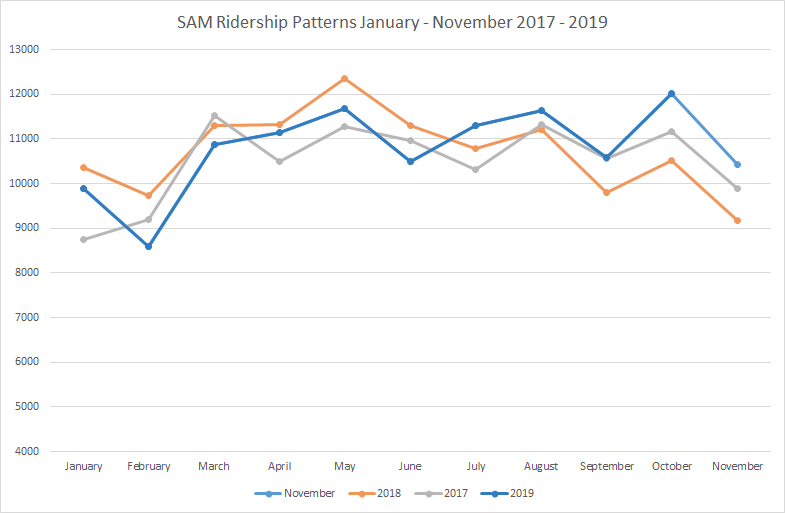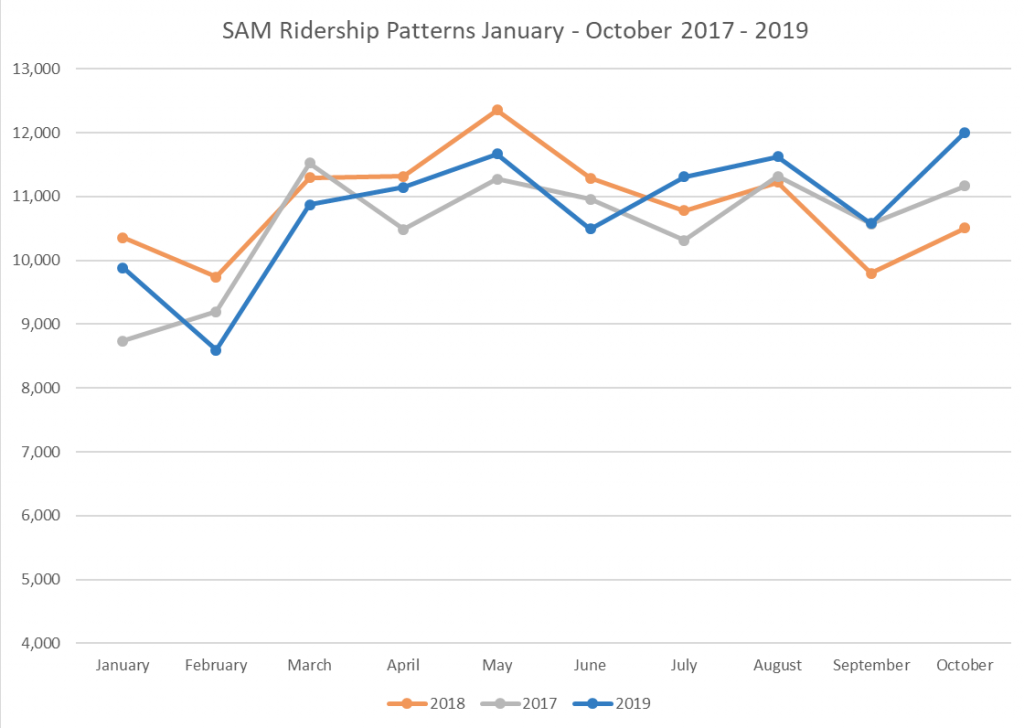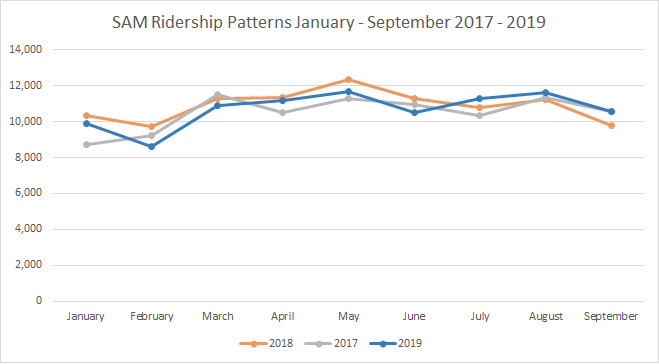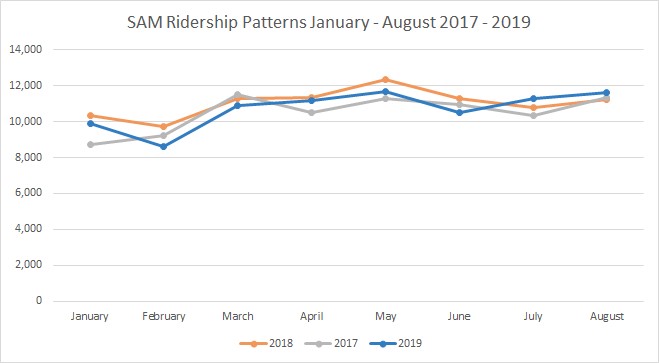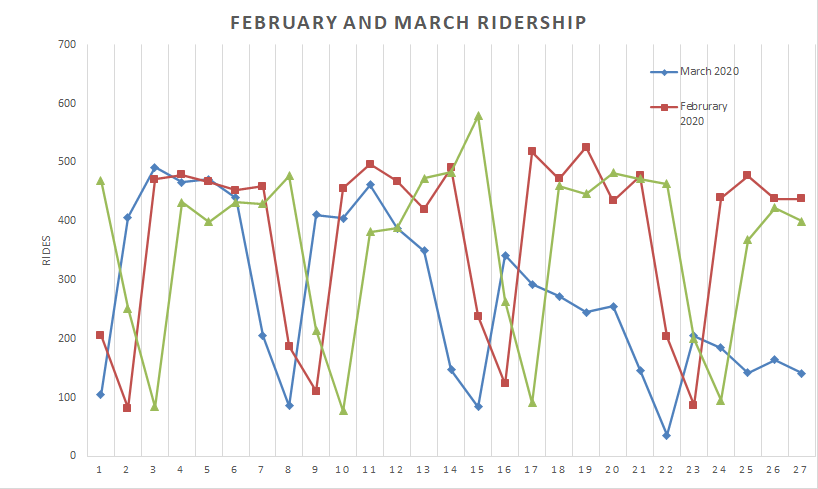 Due to the COVID-19 virus, Transit is watching ridership very closely to determine the needs of the community. As you can see from the chart, ridership has declined significantly (blue line). February 2020 is represented by red line showing that ridership was strong, stronger than March of 2019 (green), until the Covid-19 stay in place orders.
Due to the COVID-19 virus, Transit is watching ridership very closely to determine the needs of the community. As you can see from the chart, ridership has declined significantly (blue line). February 2020 is represented by red line showing that ridership was strong, stronger than March of 2019 (green), until the Covid-19 stay in place orders.
While ridership is down, it is important to remember that there are still hundreds of people per day using this system as it is essential for them to get to work, get to family and get goods and services they need. Therefore, Transit will strive to continue to provide service and be a lifeline for those who need it.
The SAM Gresham route has been changed to Saturday service, running hourly rather than every half hour. The Medical Rides driver is still giving medical rides but is also assisting the Senior Center for Meals on Wheels Monday through Friday, with the exception of Thursday. We have partnered with Sandy’s Helping Hands and Fred Meyer to deliver groceries to those in need as part of the SAM rides program. Estacada and Shopper Shuttle routes have not been changed.
Mt Hood Express has significantly reduced service. The Express route has decreased from 8 runs daily to 3 and is no longer serving Ski Bowl or Timberline due to State restrictions. The Village Shuttle continues to operate the regular schedule.
All services, SAM and MHX, are fareless during this time as well as all Clackamas County Transit (CAT, SCTD and SMART).

 Ridership was up in January 2020 as compared to January 2019, an overall increase of 11.04%. SAM services provided 10,974 rides in January, compared to 9,883 in January 2019. 8,074 of those rides were on the SAM Gresham route, an increase of 8.07%. The SAM Estacada route is experiencing increases in ridership as well, with 47.8% increased ridership. The Shopper Shuttle increased by 111.7% providing over 1,000 rides in January. SAM rides experienced a decrease of 24%, likely due to a combination of more available shopper shuttle hours and dispatch/scheduler changes. The Edlerly and Disabled medical rides program (ED) also saw a decrease of 9.4%.
Ridership was up in January 2020 as compared to January 2019, an overall increase of 11.04%. SAM services provided 10,974 rides in January, compared to 9,883 in January 2019. 8,074 of those rides were on the SAM Gresham route, an increase of 8.07%. The SAM Estacada route is experiencing increases in ridership as well, with 47.8% increased ridership. The Shopper Shuttle increased by 111.7% providing over 1,000 rides in January. SAM rides experienced a decrease of 24%, likely due to a combination of more available shopper shuttle hours and dispatch/scheduler changes. The Edlerly and Disabled medical rides program (ED) also saw a decrease of 9.4%. 
